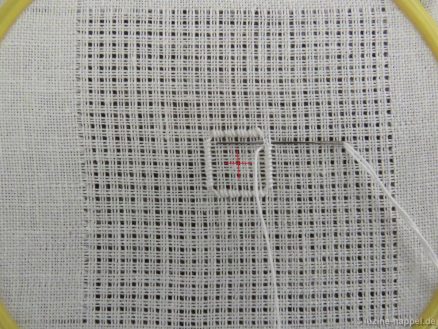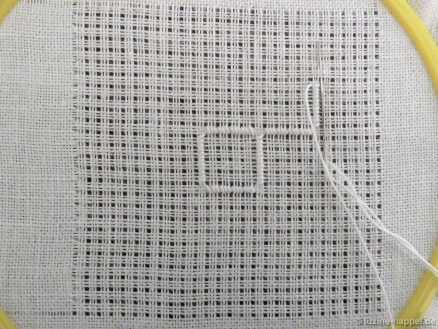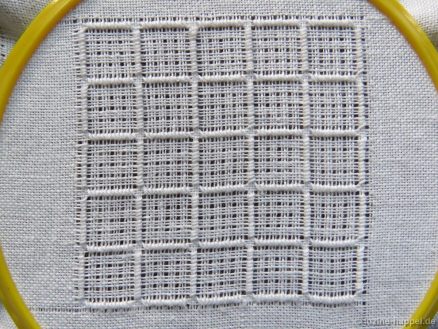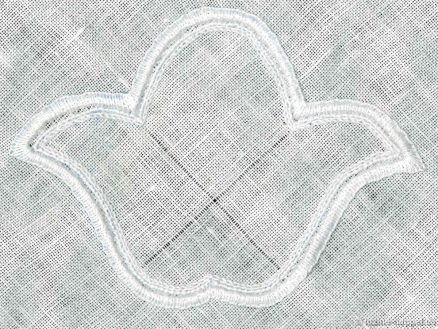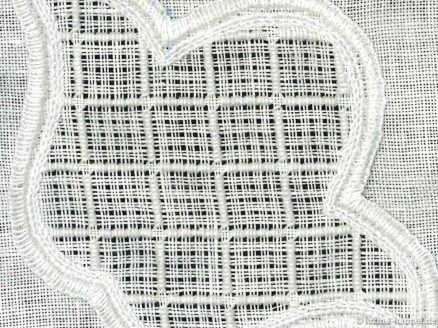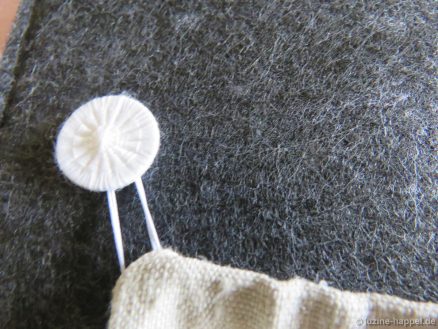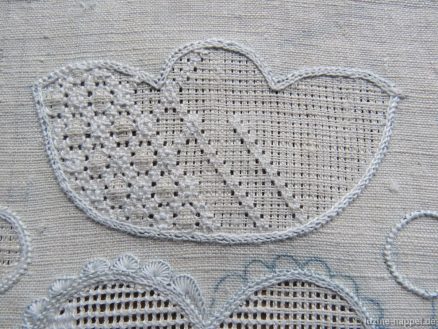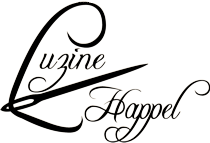Filling Pattern – No. 580
category: Limet-Filling pattern
linen used: 13.5/cm thread count
threads used: coton à broder No. 20
stitches used: Satin stitches and parts of square eyelets
center: intersection of withdrawn thread lines (in other shapes or motifs longitudinal axis = withdrawn thread line)
one pattern segment: 20 fabric threads
This pattern for larger motifs can be used for shapes both on the straight of grain and shapes on the bias.
The filling pattern shown here is a practice exercise only. You can see it used in a shape at the end of this article.
First, establish a Limet grid with an intersection of withdrawn thread lines at the center by alternately cutting 1, leaving 3, vertically and horizontally.
Mark around the center point by working Satin stitch bars around an area of 4 X 4 squares (the center point situated directly in center).
Continue working Satin stitch bars over one square (3 threads) in the width and 4 squares (12 stitches) in the length in a stair-step manner
until the entire shape is filled.
Free squares of 4 x 4 small squares have been formed. Square eyelet parts are embroidered into these. Worked is counterclockwise with 56 stitches.
Starting from a corner point, emerge the needle one square(3 X 3 fabric threads) diagonally inwards
and *wrap this corner square
with 7 Satin stitches, each starting from the same point. The working thread is moderately tensioned after each stitch so that it lies smoothly but does not pull any fabric threads together.
After the seventh stitch, bring the needle to the center of the 4 X 4 squares.
From there work 7 stitches between the center and the edge directly next to the previously worked stitches, moving one fabric thread further along the edge with each stitch.
After the seventh stitch, bring the needle straight down one square*
rotate the work 90° clockwise and repeat steps (*)
three times in all.
After the 56th and final stitch, bring the needle to the first emerging point of the next 4 X 4 square by sliding the working thread on the back through existing stitches,
and then work as established until the entire shape is filled
I called this arrangement of quarters of the simple square eyelet and 7 stitches of the double square eyelet “gingerbread” because the formation reminds me of the Christmas pastries popular in Germany.
This pretty pattern can also be embroidered into motifs on the bias, as shown here with the tulip.
To do this, however, you have to prepare the Limet thread grid accordingly. Details can be found in this article
Then continue in the established way.
Now I wish you an enjoyable time. I’m going to take a break now and then get back to you with a newsletter.

